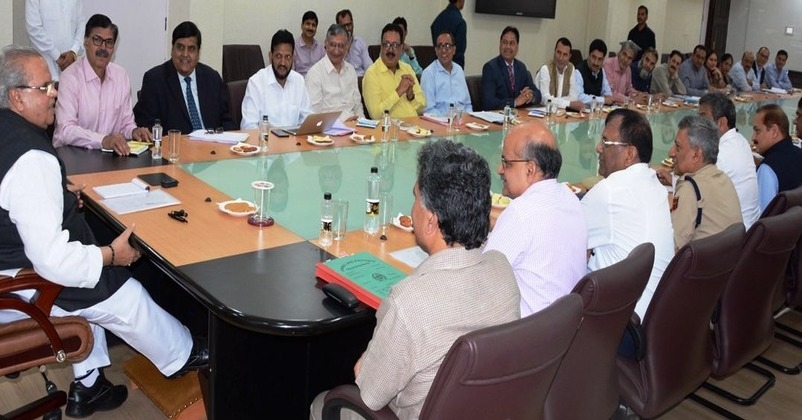Why Governor’s Administration proved better than the elected Government in J&K
| 12-Dec-2018 |

Satya Pal Malik, who became the Governor of J&K on 21 August 2018, made it clear that good governance and delivering results are his first and foremost priority on the first meeting with his advisors. While the elected governments failed to deliver on the promise and taking any major step in this regard, the governance under the governor has deliver it through his words and actions. Though the political parties finding it difficult to have any solid ground to oppose the decisions of the Governor but they continued up the ante against the governor. The Governor was unfazed by this development and took major steps for good governance and effective administration. The major initiatives undertaken by the governor were:
- He successfully completed free, fair and peaceful Municipal and Panchayat elections for 79 urban local bodies and 4483 panchayats. He did this despite the election boycott call given by the Joint Resistance Leadership (JRL), an alliance of separatists from Kashmir valley, and two major political parties, National Conference (NC) and Peoples Democratic Party (PDP). This step was taken by the Governor to restore local level participation and democratic decentralization of Governance.
- The Jammu and Kashmir Municipal Laws (Amendment) Bill 2018 was passed by the Governor and the Mayors/Deputy-Mayors of Municipal Corporations and Presidents/Vice-Presidents of Municipal Councils/Municipal Committees were elected through secret ballot. He approved transfer of development funds of Rs 2300 crores per annum for Panchayats and 1200 crores to Urban Local Bodies. He devolved more power to Panchayats through making amendments in Panchayati Raj Act-1989 to ensure decision making power at local level. He ordered that the Health & Family Advisory Committee and Village Health Sanitation and Nutrition Committees will be headed by Sarpanchs. The important schemes like MGNREGA, Pradhan mantra Awas Yojna, Mid-Day Meal, ICDS etc. will be implemented by Panchayats. Panchayats will audit the government schemes and programmes. He approved Rs 2500/- and Rs 1000/- honorarium for Sarpanchs and Panchs and clearly outlines the role of Ward Sabhas and Gram Sabhas. He made the provision for training of 40000 grassroots representatives.
- He launched ‘Sabki Yojna Sabkah Vikas’ campaign and registered Panchayat Secretaries as facilitators and 16423 officials of different departments registered as frontline workers. He delegated the responsibility of identification of the beneficiaries of all the schemes onto the Panchayats. He launched Panchayat-wise survey under ‘Mission Antodaya’ to identify gaps in physical and social infrastructure for effective planning. He approved the development of comprehensive Gram Panchayat Development Plan (GPDP), first in the state, by converging the schemes that would form the basis of rural planning.
- The Governor gave a greater push to Ladakh’s development aspirations by amending the Ladakh Autonomous Hill Development Council (LADHC) Act to empower the Council. The Councils were empowered to release funds earmarked for development works of Ladakh region. He addressed the constrained of hostile weather conditions, limited working seasons by putting the funds earmarked for Ladakh region in a separate non-lapsable head. He put the employees of major departments under the administrative control of Councils to ensure accountability at local level.
- Some other important decisions that the Governor has taken are: land for 2 new AIIMS handed over; whole chunk of land for IIT, IIM handed over; land for IIM out-campus identified in Kashmir; first ever Anti-Corruption Bureau established to effectively tackle and eliminate corruption from public institutions; Fact Finding Committees constituted to go into areas suspected of having transparency issues; 42211 new posts in different departments were created; Governor’s Grievance Cell and District Grievance Cells established etc.
The Governor’s acumen and the way of bringing transparency and efficiency have developed envy among the major political parties of the valley. The Governor has truly brought the local governance in J&K and he has ensured that the democracy must not become a lip service only but the action must speak about it. Unfortunately, the elected government could not do what governor has done in his brief stint to ensure participation at local level and accountability and transparency in the system of governance. He has truly brought good governance in the administration of J&K.